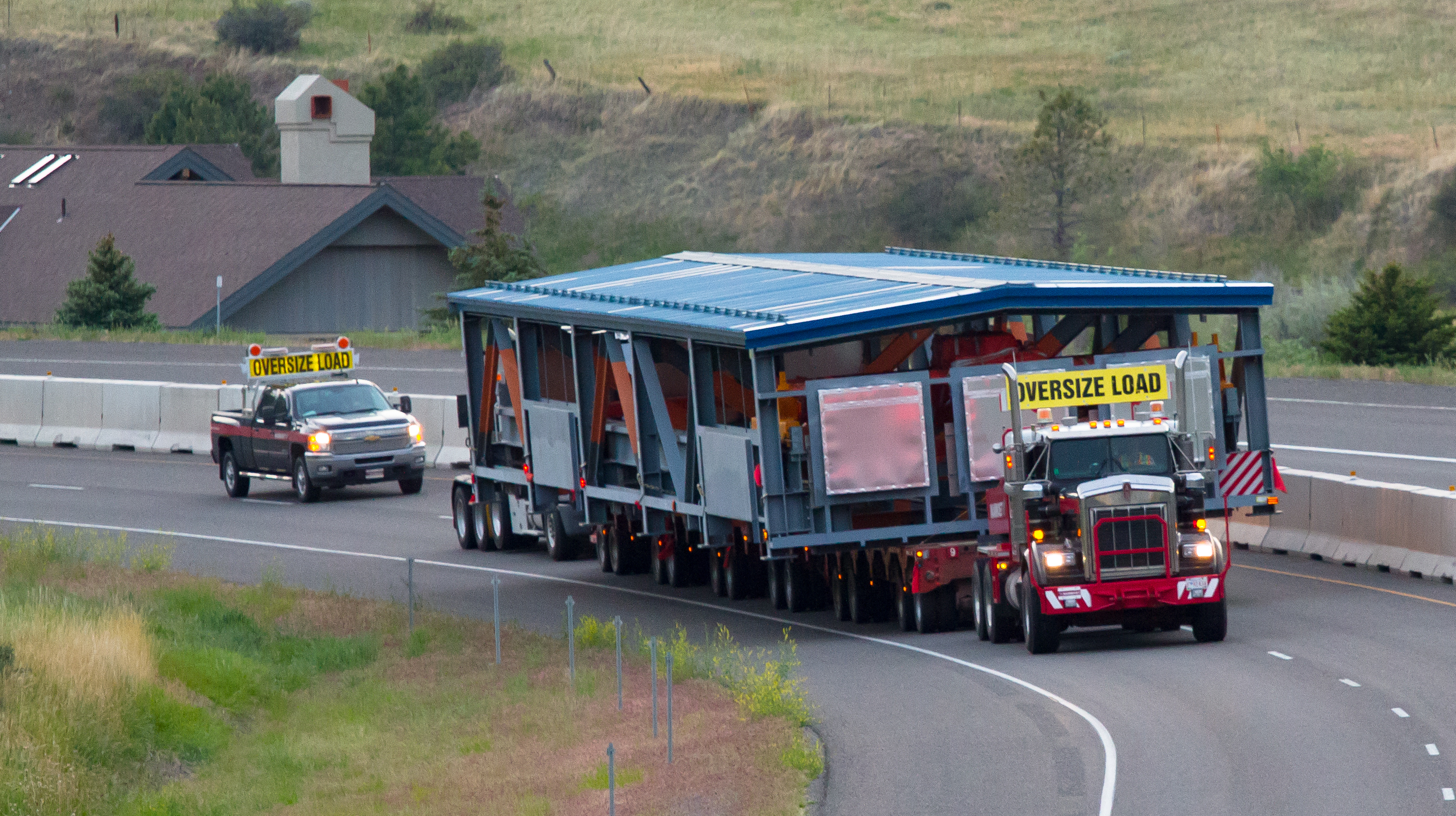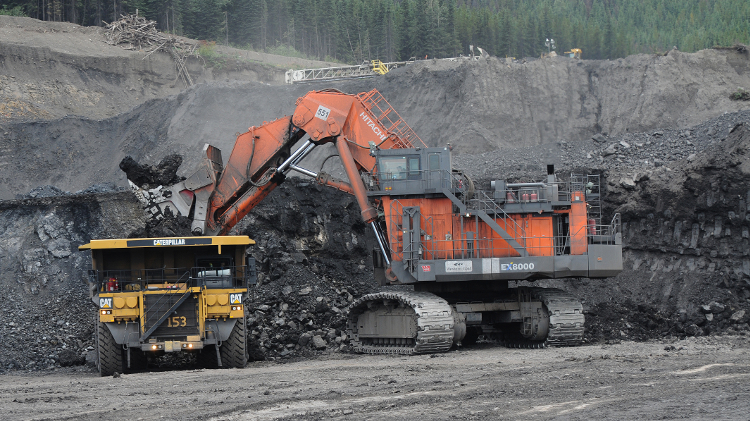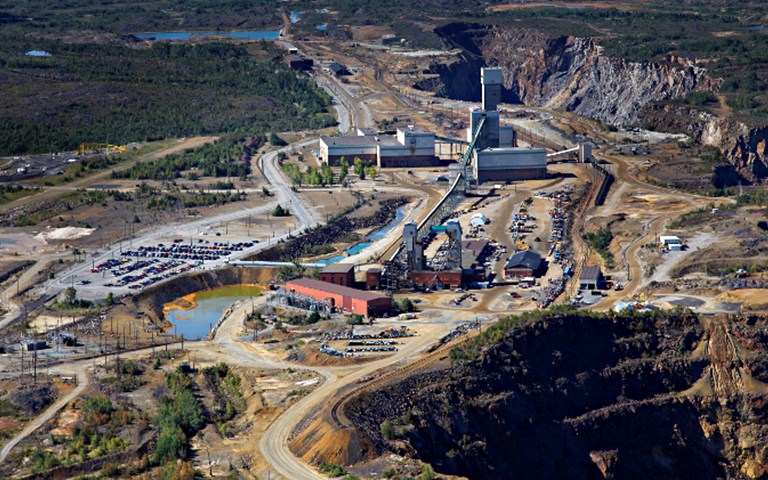Cost and safety concerns inspired a closer look at how waste moved through the Stobie mine site. Courtesy of Vale
Flipping a dumpster is a hassle. Without a specially-designed bin and attachment, an operator must get out of the loader to secure and then detach the bin. Luckily operators at Vale’s Stobie mine have never been injured this way. But still, the hazards made mine management uneasy.
At the same time, the waste in the underground bins was co-mingled. The bins contained a wide variety of refuse in them: household and industrial wastes as well as recyclable materials. While that made it easy for miners underground to dump their trash, the local landfill operator was charging Vale to sort it out.
Vale decided to try to kill two birds with four bins. To protect employees from potential injury and to reduce the amount of sorting at the landfill, the mine implemented a new waste management system at its underground operation – one that is similar to what already happens in kitchens and garages across the country.
In 2014, Vale implemented a colour-coded bin system for different types of waste; instead of dumping everything into one bin, workers now sort out recycling, domestic waste, scrap metal and industrial waste at waste stations underground.
“It’s just keeping up with the times, so to speak,” said Gary Remington, Vale’s environment superintendent. “We’re in 2016 now. As everyday citizens, we’re all practicing these things at home, right?”
Bin there, done that
Even before implementing the waste stations, Vale had a waste management system implemented above ground. “We’ve had a colour-coded bin system in place now for, oh, probably 20 years at least,” Remington said.
But space and logistics issues in the underground environment meant Vale had not really considered switching up its waste management strategy. And, Remington noted, it was not a priority. “From a logistics perspective, the whole idea of organizing waste when you’re trying to do mining and all the things that you do underground – it can kind of take a back seat.”
The system is based on what was already happening with the old bins, said logistics supervisor Thomas Holmberg. “We already had a couple of main locations that were our transporting spots when we’re moving supplies underground at some of our main levels in the mine,” he said. “And we also looked at some of the areas where the waste is generated from, like the local garages underground.”
Four levels of the mine have strategically located waste stations where garages and other areas can bring their materials. “From there, when the bin gets full, it’s taken from that waste station and brought to the cage and sent up,” Remington said.
The new bins are much smaller than the older ones – about 36 cubic feet instead of 240 cubic feet – but a larger number of smaller bins can fit better in tight underground spaces. (Vale’s local landfill operator, Day Construction, provided the bins.) “We do have different sized bins – we have smaller bins in areas with limited space and that generate less waste, and larger bins in areas where there is a significant amount of waste generated,” Holmberg said.
The bins are emptied above-ground every day, Remington said, transported through the mine on forklift to the cage, then brought up to surface. The industrial waste and steel material is dumped into larger designated bins on surface and the smaller domestic and recycling material is placed in a designated area then dumped for disposal off site.
The forklift is equipped with a rotator attachment, allowing an operator to turn the bins and dump them out into a larger bin without getting out of the cab – thus eliminating the potential for a twisted ankle or a tweaked knee.
To ensure employees use the system appropriately, the program includes a training and auditing process. Remington’s team goes out to each waste site at Stobie – above- and below-ground – every quarter and checks the above-ground bins for cross-contamination, he explained. If they notice a problem, they try to find the underlying cause.
“It goes back to just providing that education and trying to understand if there is a problem with these bins,” he said. “Are the bins not getting back underground quickly enough so we’re using recycling bins for domestic or vice versa? Maybe there’s a logistics project there to sort out.”
Repair or re-envision?
When Vale first decided to implement the program, the company was facing a $100,000 repair bill for the old bins. (As operators dumped the bins out at the surface, the bins often took a beating.) But repairing the bins would not have eliminated the risk of injury to operators, explained Remington.
The second option – the new bins and system – was cheaper. “We did have to purchase more bins because they’re a smaller size,” Remington said, and the company needed to buy the rotator attachment for the forklift. According to Remington, the total cost was around $60,000.
In addition to a lower one-time expense, the company is also saving money each month on the cost of segregating materials at the landfill.
“It’s hard to understand totally what Stobie’s [individual] contribution was because we get a total cost of segregating at the landfill and that includes segregating for all the sites,” Remington said.
“It also helps organize things better underground,” Remington said. “Everything is sort of in its spot.”
Moving ahead
The system is not perfect. Some cross-contamination due to human error is almost guaranteed, Remington said. “I’m not naive. We’re not going to eliminate [it] 100 per cent. But I would say based on the feedback that we get from our landfill operators that the amount of cross-contamination coming from the bins at Stobie has certainly improved greatly over that time.”
The upfront cash costs of implementing this program were not insignificant, and every dollar counts during a downturn.
“I think it’s certainly a feather in the cap of the Stobie employees. They can say that they’ve tackled this problem and succeeded.”
Remington and his team visited the site in September, and the program is still going strong. “There are always going to be hiccups, but all in all we’re seeing the benefits of it.”




